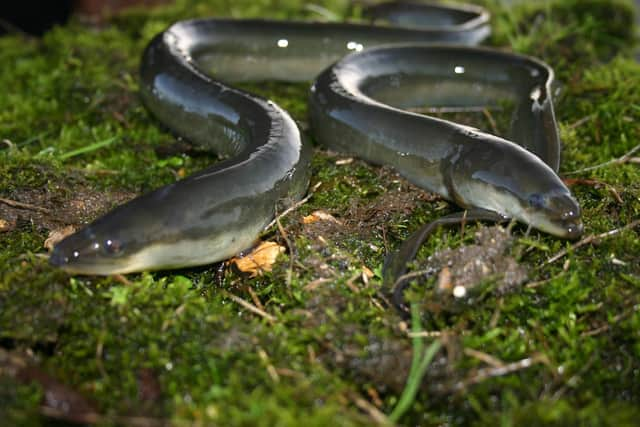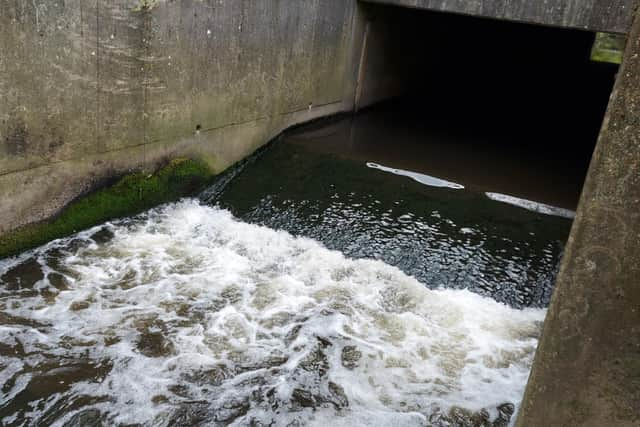Endangered eels face more than double the number of barriers along river near Horsham and Crawley
This article contains affiliate links. We may earn a small commission on items purchased through this article, but that does not affect our editorial judgement.
and live on Freeview channel 276
Volunteers trained by the South East Rivers Trust (SERT) as part of the Thames Catchment Community Eels Project found 119 impediments – such as weirs, sluices and culverts - 66 of which were new to existing data.
The 23 citizen scientists trained by SERT assessed 107kms (66.5 miles) of the River Mole network, which rises near Horsham and stretches from Crawley via Horley along the Mole Valley to East Molesey and Thames Ditton, where it joins the River Thames.
Advertisement
Hide AdAdvertisement
Hide Ad

The critically endangered European eel, a species of fish, starts life hatching out of a tiny egg in the Sargasso Sea, in the Atlantic Ocean, before travelling 6,500km to Britain. Eels spend most of their lives in Britain’s freshwater rivers.
They need to be able to travel around river networks so that, after many years as fully grown adults, they can eventually make the immense journey back to the Sargasso Sea to spawn. However, their journey along many rivers is inhibited by a range of man-made obstacles.
READ THIS: Plans for new veterinary surgery in Crawley submitted - a year after similar one was turned down.
Advertisement
Hide AdAdvertisement
Hide AdSERT also held workshops and assemblies for 1,136 children, 106 people heard their talks about the lifecycle of eels and 148 took part in guided walks. In addition they trained 31 volunteers to monitor eel numbers at the Island Barn sluice in Molesey, where they recorded about 2,000 passing through the eel pass.


The Thames Catchment Community Eels Project is a partnership led by Thames Rivers Trust and working with Action for the River Kennet (ARK), South East Rivers Trust and London-based environment charity Thames21.
READ THIS: Gatwick Airport gears up to reopen south terminal with 5,000 jobs boostThe project works closely with the Zoological Society of London (ZSL) and Thames Estuary Partnership (TEP) to aid the long-term survival of the European eel.
Polly Penn, head of working with communities at the South East Rivers Trust, said: "We have been excited to be part of this project. It was a great opportunity to teach people about the lifecycle and plight of the European eel, as well as to contribute to vital data showing the barriers they face in moving along our rivers.
Advertisement
Hide AdAdvertisement
Hide Ad"The South East Rivers Trust has lots of experience either removing barriers or creating fish passes and we hope this project will lead to further enhancing nature along the River Mole in this way."
Dave Wardle, chairman of the Thames Rivers Trust, said: "The European eel is an iconic fish and plays an important role in the ecosystems of the Thames and its tributaries.
"We are very pleased to have been able to give local communities along five rivers in the Thames catchment a range of opportunities to discover more about their rivers, eels and their local Rivers Trust.
"The next step is to secure funding for barrier removal or eel passes at the priority sites for eel passage identified during this project."
Advertisement
Hide AdAdvertisement
Hide AdThe Thames Catchment Community Eels Project is funded by the government’s Green Recovery Challenge Fund, which is delivered by The National Lottery Heritage Fund in partnership with Natural England and the Environment Agency.
For the latest breaking news where you live in Sussex, follow us on Twitter @Sussex_World and like us on Facebook @SussexWorldUK.